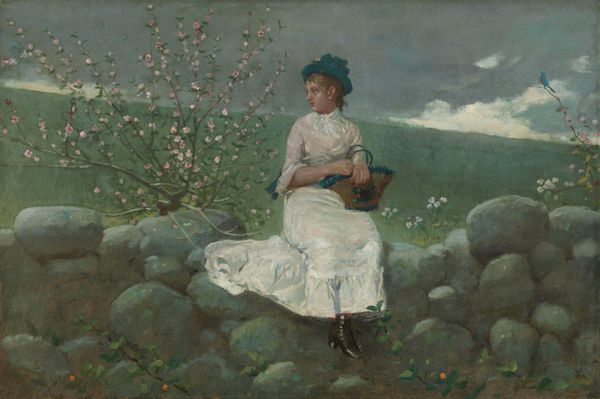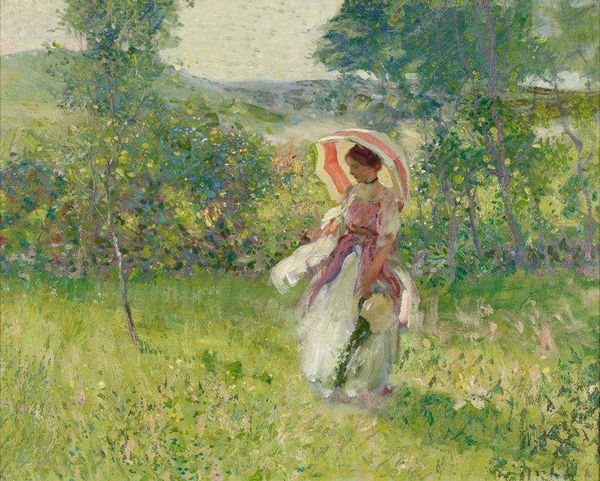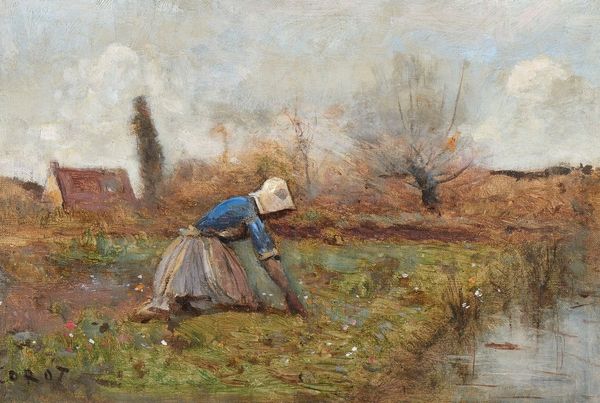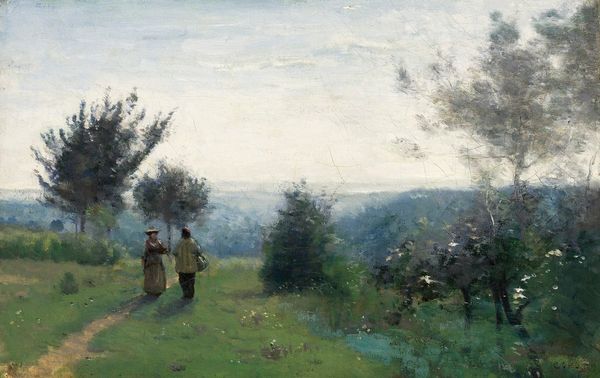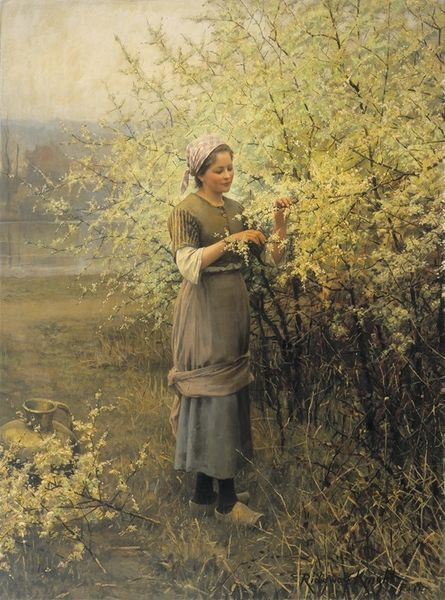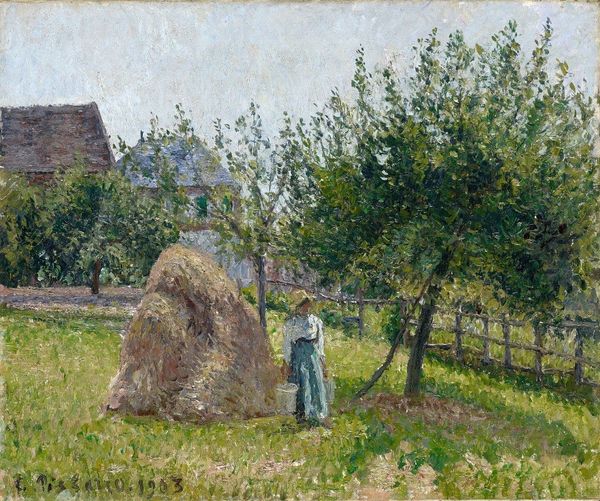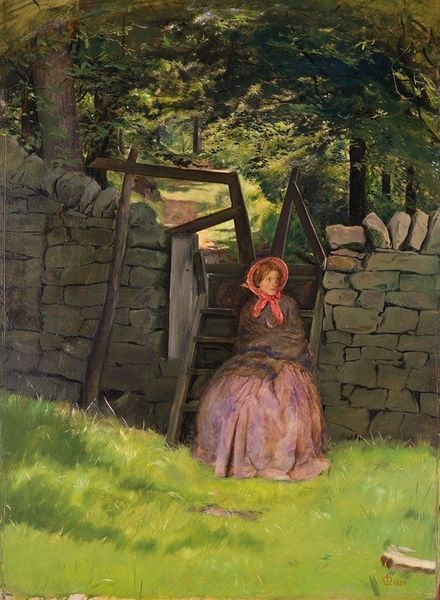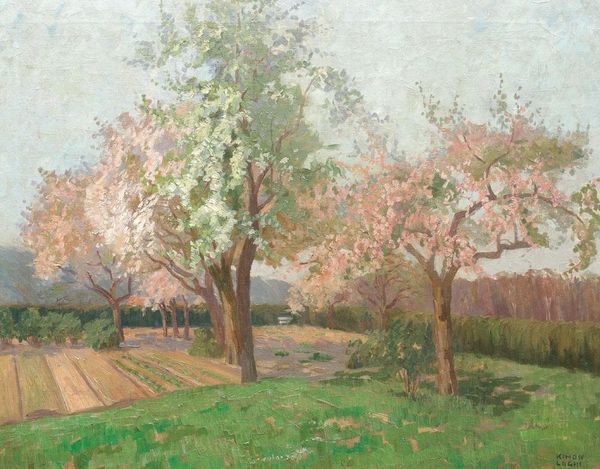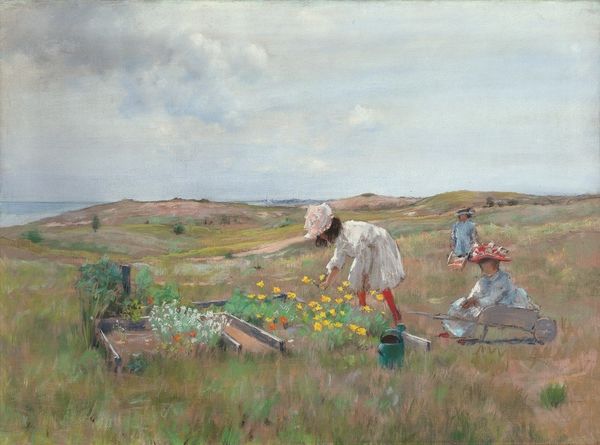
Copyright: Public Domain: Artvee
Editor: Winslow Homer's "Peach Blossoms," created in 1879 with oil paints, offers a subdued palette. I'm struck by the muted tones and the almost melancholic air it evokes. The brushwork appears quite loose. What formal qualities stand out to you, and how do you interpret this work in terms of its construction? Curator: The compositional structure hinges on a subtle yet significant interplay of horizontals and verticals. Note how the planar stability established by the stone wall, a distinctly horizontal element, finds a delicate counterpoint in the verticality of the young woman and the peach tree. Furthermore, consider the artist's strategic use of color temperature. Editor: I see that! The coolness of the wall contrasting with the warmer hues in her dress and the blossoms. It almost seems to push her forward. But isn't the overall effect a bit subdued, a kind of deliberate flattening? Curator: Precisely. That flattening enhances the painting's artifice. Observe how Homer uses a restricted tonal range to create depth, primarily relying on value contrasts rather than sharp delineations. Do you also notice how the artist merges the background tonalities in a very particular and self-aware manner, and the interplay between surface and depth? Editor: Yes, I can see how the slightly blurred background pushes forward because there is not a full contrast as one would expect. The structure emphasizes design, in a way. I learned so much about how to appreciate these artistic choices. Curator: Exactly! Paying attention to color temperatures and design components unveils hidden dimensions. This work underscores the profound expressiveness inherent within formal arrangements.
Comments
No comments
Be the first to comment and join the conversation on the ultimate creative platform.
